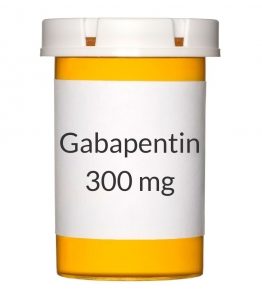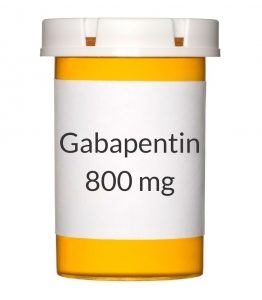How Does Gabapentin Work?
Gabapentin works by interacting with nerve cells in the brain and spinal cord. Under normal conditions, nerves send electrical signals to the brain, which allows the body to sense pain, touch, and movement. In certain situations, however, these nerve signals become abnormal. This can cause pain or lead to seizures, where the brain’s electrical activity becomes disorganized.
Gabapentin binds to particular sites on nerve cells called voltage-gated calcium channels. These channels release certain neurotransmitters that send pain signals and trigger abnormal brain activity. When Gabapentin attaches to these channels, it helps prevent the release of these neurotransmitters. As a result, the transmission of pain signals is reduced, and the chance of seizures is decreased. This makes Gabapentin an effective treatment for conditions involving nerve pain and abnormal brain activity.
Uses
Gabapentin 400 mg capsules are used to treat a wide variety of conditions that involve nerve pain or seizures. Some of the most common uses of Gabapentin include:
- Neuropathic Pain: Gabapentin is most commonly used to treat pain caused by nerve damage. Conditions like diabetic neuropathy (nerve pain caused by diabetes), post-herpetic neuralgia (pain following a shingles infection), and trigeminal neuralgia (pain affecting the face) can all be managed with Gabapentin. It works by reducing the abnormal nerve activity that causes pain.
- Epilepsy (Seizure Control): Gabapentin is often prescribed for people with epilepsy, particularly those who have partial-onset seizures. Gabapentin helps control these seizures by calming down the overactive electrical activity in the brain.
- Restless Leg Syndrome (RLS): Gabapentin is used to treat RLS, a condition where people experience an uncontrollable urge to move their legs, especially at night. This can help reduce discomfort and improve sleep.
- Fibromyalgia: Fibromyalgia is a condition that causes widespread pain, fatigue, and tenderness in muscles and joints. Gabapentin can be used to help manage these symptoms, although it’s not officially approved for this use.
- Hot Flashes: Although it’s not FDA-approved for hot flashes, Gabapentin may be prescribed off-label to reduce the severity of hot flashes in women undergoing menopause.
- Anxiety: Gabapentin has been used off-label to help manage anxiety disorders, including generalized anxiety disorder (GAD) and social anxiety disorder. Its calming effect on the nervous system can provide relief from anxiety symptoms.
Benefits
Gabapentin 400 mg capsules offer several benefits, especially for people who suffer from nerve-related pain or seizures. Some of the most notable benefits include:
- Effective Pain Relief: Gabapentin is particularly effective for nerve pain, helping to reduce pain caused by conditions like diabetic neuropathy, post-herpetic neuralgia, and trigeminal neuralgia. It works by calming down the nerve signals that cause pain, making it a great alternative to other pain management options.
- Seizure Control: Gabapentin is also effective in controlling seizures, particularly partial seizures in people with epilepsy. It helps stabilize electrical activity in the brain and reduce the occurrence of seizures.
- Improved Sleep: For people with restless leg syndrome (RLS) or fibromyalgia, Gabapentin can help minimize discomfort and pain, making it easier to sleep through the night. It can also help people with anxiety sleep better by reducing feelings of restlessness or nervousness.
- Non-Addictive: Unlike opioid pain medications, Gabapentin is not addictive, making it a safer option for long-term pain management.
- Mood Stabilization: Gabapentin has been shown to help stabilize mood and reduce symptoms of anxiety in some patients, making it a helpful treatment for those dealing with both pain and anxiety.
Side Effects
Like all medications, Gabapentin 400 mg capsules can cause side effects. While many people tolerate the drug well, some may experience mild or more severe side effects. Common side effects of Gabapentin include:
- Drowsiness or Fatigue: Feeling tired or sleepy is one of the most common side effects, especially when starting the medication.
- Dizziness: Some people may feel lightheaded, dizzy, or unsteady on their feet, particularly when standing up quickly.
- Swelling: Swelling in the hands, feet, or ankles is another common side effect.
- Nausea or Vomiting: Some people may feel sick or experience nausea and vomiting, particularly when they start the medication.
- Memory Problems: Gabapentin can sometimes affect short-term memory or concentration. This is usually temporary and may improve as your body adjusts to the medication.
Recommendations for Safe Use
To use Gabapentin 400 mg capsules safely, it is essential to follow these recommendations:
- Follow the Dosage Instructions: Always take Gabapentin precisely as your doctor prescribes. Your doctor will start you on a low dose and may gradually increase it to reduce side effects. Never take more than the prescribed amount.
- Take with or without Food: Gabapentin can be taken with or without food, depending on your preference. Taking it with food may help reduce stomach upset.
- Avoid Alcohol: Drinking alcohol while taking Gabapentin can increase the sedative effects of the medication, leading to drowsiness and dizziness. It’s best to avoid alcohol while on Gabapentin.
- Monitor Kidney Function: Gabapentin is processed by the kidneys, so if you have kidney problems, your doctor may adjust your dose or monitor your kidney function regularly.
- Do Not Stop Abruptly: If you need to stop taking Gabapentin, do so gradually, as directed by your doctor. Stopping suddenly can lead to withdrawal symptoms or an increase in seizures.
FAQs
Can I take 400 mg of Gabapentin with other medications?
Gabapentin can interact with other medications, particularly those that affect the central nervous system, like sedatives, painkillers, and antidepressants. Always inform your doctor about all the medicines you are taking.
How should I store these capsules?
Store the medication at room temperature, away from moisture and heat. Please keep it in its original packaging to protect it from light.
How long does it take to deliver Gabapentin capsules to the US?
International shipping of capsules to the US takes approximately 14 to 25 days. For domestic shipping, the estimated delivery time is up to 10 days.
Do I need a prescription to buy Gabapentin capsules?
While we offer the option to buy capsules without a prescription internationally, we strongly recommend consulting your physician and seeking medical advice before taking any medication.
Important Note:
Purchasing Gabapentin 400 mg capsules online from USA-Pharmacy is simple and secure for US customers. It accepts trusted payment methods like Visa, Mastercard, and PayPal, which protect transactions and keep information safe. Customers benefit from guaranteed delivery, with a full refund offered if orders do not arrive as expected, fostering trust in online medication purchases. Responsive customer support is available via email at [email protected], typically responding within 48 hours to any medication or order status questions.







